Gus Van Sant - Elephant (2003)
Monday, July 9, 2007

Screenshot's: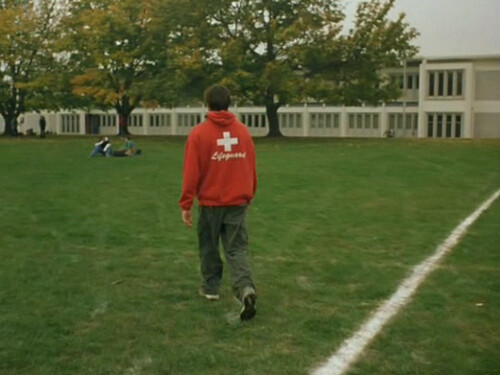
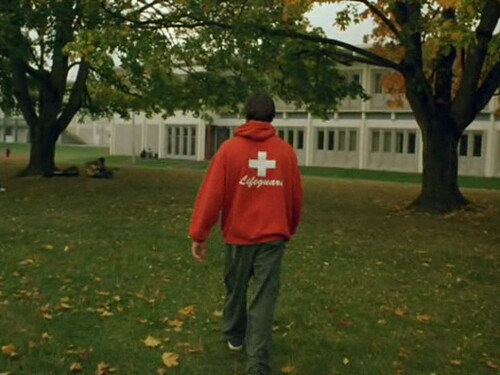
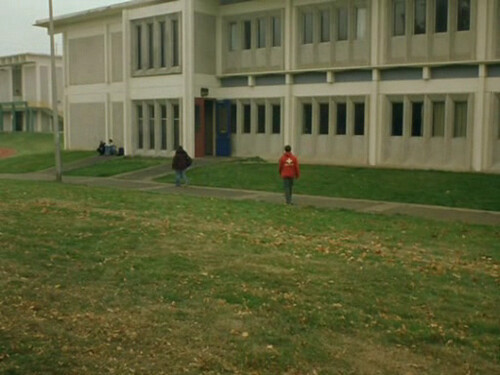
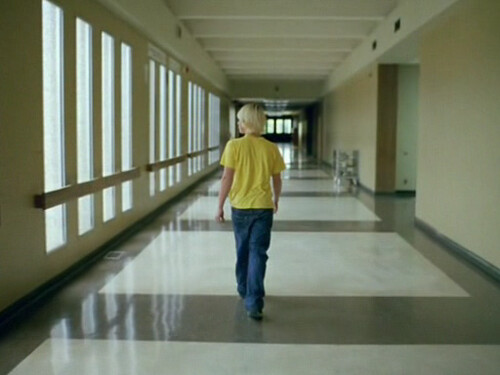
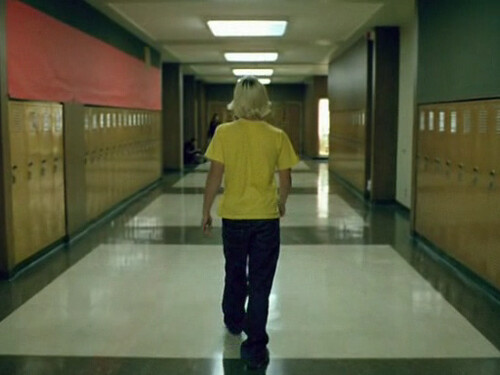


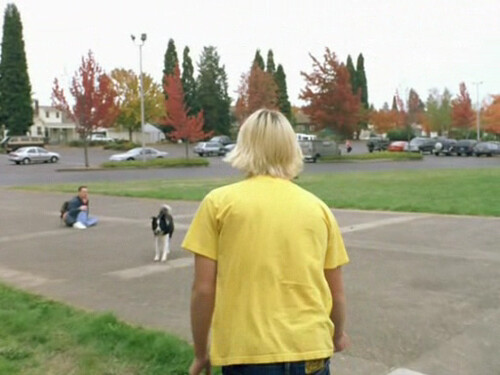
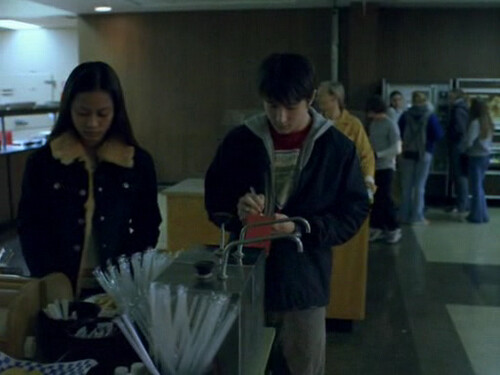

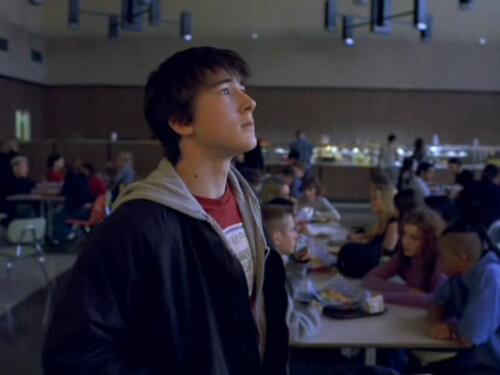


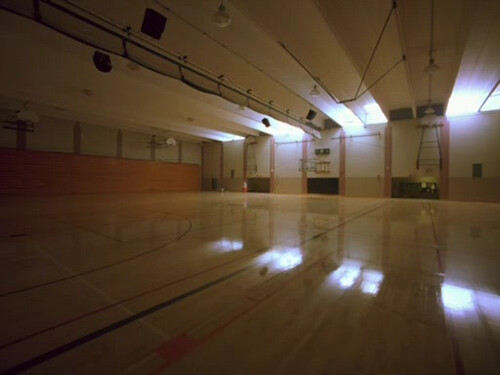

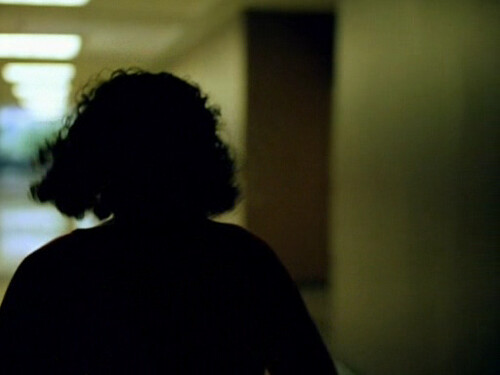

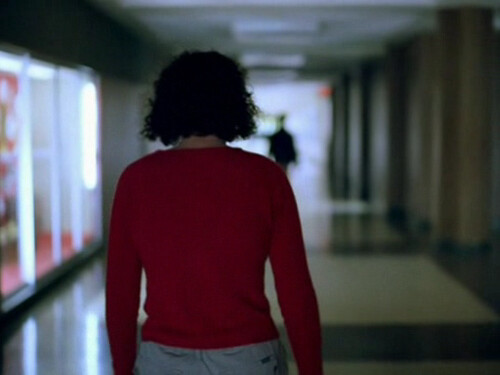 The reason why i would share this work, should be clear for anyone viewing the screenshots above. I've only seen the work once, and didn't really want to focus on anything else than the speed of the camera through the halls of the high school. So, high school shootings is not my focus here. I would actually recommend you to stop the movie somewhere around the middle. Review below.
The reason why i would share this work, should be clear for anyone viewing the screenshots above. I've only seen the work once, and didn't really want to focus on anything else than the speed of the camera through the halls of the high school. So, high school shootings is not my focus here. I would actually recommend you to stop the movie somewhere around the middle. Review below.
Gus Van Sant's ''Elephant,'' has a premise so simple that in the abstract it borders on the banal. Plotless and stubbornly resistant to conventional narrative structure, the movie has its camera follow students around the halls and grounds of a high school in Portland, Ore., for a day, until violence erupts. ''Elephant,'' which has its premiere tonight at the New York Film Festival and opens commercially on Oct. 24, is the director's take on the murders that took place at Columbine High School.
The title comes from the British director Alan Clarke's 1989 rough-and-ready short film of the same name, a tough and dense look at the violence in Northern Ireland, which also didn't paste answers onto the problem. Mr. Clarke's short outraged or absorbed viewers in the way that Mr. Van Sant's movie, which won the Palme d'Or at Cannes, is likely to do. (Mr. Clarke's title referred to the aphorism about the elephant in the living room that goes ignored -- a problem that people refuse to face for so long that they are no longer even able to see it.)
This new ''Elephant'' will also confound people looking for solutions or villains, because it doesn't supply them. There's no narrator perched omnisciently over the events, nor the kinds of exaggerated melodramatics and pop music that teen movies employ to insistently nag at emotions. There are few recognizable actors, since Mr. Van Sant populated the movie with kids who had never acted before, heightening the realism and the tension.
''Elephant'' is a formalist exercise with real affection for the kids -- like the photographer Elias (Elias McConnell), who assuredly slips through the school while grabbing shots of his friends or whatever catches his eye. Elias has a lazy, physical confidence, and his natural charisma is emphasized by the chilled-out immediacy of the camerawork. And the young actor's star quality becomes part of the filmmaker's misdirecting our attention, too: since Mr. McConnell holds the camera like a protagonist, we're lulled into thinking the film is his story.
His being a photographer would be a cheap way into the movie, which Mr. Van Sant rejects. Instead, the camera floats from one life to another, flirting with Michelle (Kristen Hicks), a loner with a plaintive face who doesn't fit in with the other girls. She takes us to the climactic scenes.
The cinematographer Harris Savides summons all of his talents to romanticize the naturalism, yet the constant movement and long takes aren't petty virtuosity. This skill is a part of what was once considered directing -- an evenhandedness that we become accustomed to quickly. The camera darts through extended scenes filmed in one take, like charting the action in a high school cafeteria that ends in a dark clichéd joke: a gaggle of young divas matter-of-factly head to the bathroom to purge.
Mr. Savides's work has a low-keyed brilliance, demonstrating that a master's work needn't be showy. His résumé includes filming Calvin Klein commercials, and ''Elephant'' sometimes circles the willowy, young male hunks as if they were on a candy dish. (The sound design by Leslie Shatz adds to the reality, with the pinging, echoey ambient noises of a school that create a lingering sense of dread in those halls.)
''Elephant'' blends the warm-hearted randomness of the Hungarian filmmaker Bela Tarr's movies with the familial offhandedness of Rainer Werner Fassbinder and the minimal realism of the documentarian Frederick Wiseman -- yet the influences are not arch film-grammar quotations crying to be spotted. Mr. Van Sant knows the subject matter will increase the audience's attention.
The movie is also a departure from the director's career streak of films along the lines of ''Good Will Hunting'' that dramatize aimless young men whose lives seem like dented cans. Instead, Mr. Van Sant gives ''Elephant'' a spartan yet elusive life by shifting the film's focus from one group of students to another; the camera actually drifts like a bored high school student.
The presentation is partly attributable to the fact that this picture was made for a premiere on HBO and the filmmaker decided against the wide-screen formatting that many directors select for made-for-television projects. ''Elephant'' even looks like the kind of film you'd see projected in a high school. It's framed like a box, which gives the movie the illusory, numbed lack of import of a driver's-ed instructional film, until it moves from pedestrian normality to being drenched with the aftermath of violence.
Unlike Michael Moore's documentary ''Bowling for Columbine,'' which was suffused with an angry man's frustration and passion -- he demanded that we absorb, and act on what he had concluded -- the distanced view of ''Elephant'' is deceptively calming. It starts with a car roaming down a street and slowly weaving out of control, sideswiping the parked cars in its path. We overhear the voice of an outraged teenage boy, and immediately have our expectations thwarted. The boy, John (John Robinson) -- a lanky waif with hair that looks as if it came off a L'Oréal box -- pops out of the car and shouts at the driver, his drunken father (Timothy Bottoms).
The movie builds anecdotally toward the violent climax, arriving at the homes of the killers, Alex (Alex Frost) and Eric (Eric Deulen), a pair of outsiders who spend time together compulsively in the way high-school boys do, something that can lead cruel peers to hiss about their love lives. Mr. Van Sant reinforces such attitudes by having the boys kiss each other before they pack their bags and head off to their awful mission -- an ambiguous scene that could be sexual or a proud Viking moment before leaving home.
Unfortunately, Mr. Van Sant also takes an easy way out in one instance. The boy assassins order their weapons through the Internet, something that is not only hard to do but also robs the entire movie of the plausibility that most of ''Elephant'' contains.
But the rest of the film more than compensates for this -- especially a moment where a muscular, imposing young African-American, Benny (Bennie Dixon), wanders into the frame like a hero -- a touch that mixes reality with another film cliché: the sacrificial black man.
And by the end of the movie, we realize where much of the power and clarity of the film comes from. By making the camera an observer, we get a perspective that often comes out of horror movies, a choice that whips the ordinary with the terrifying, an unforgettable mix.
Elvis Mitchell, NY Times, October 10, 2003
Share this work via demonoid or karagarga.
at 1:39 PM